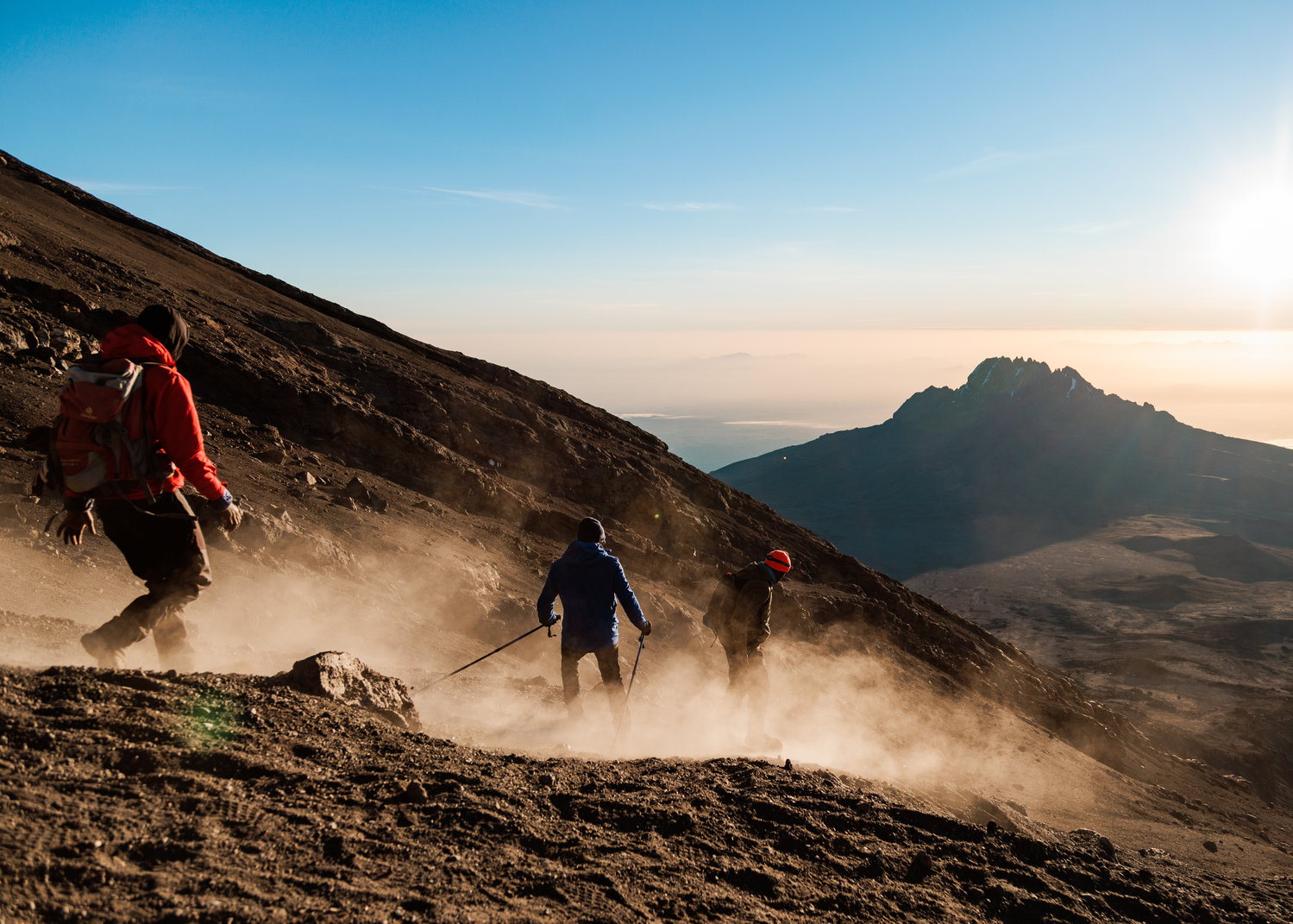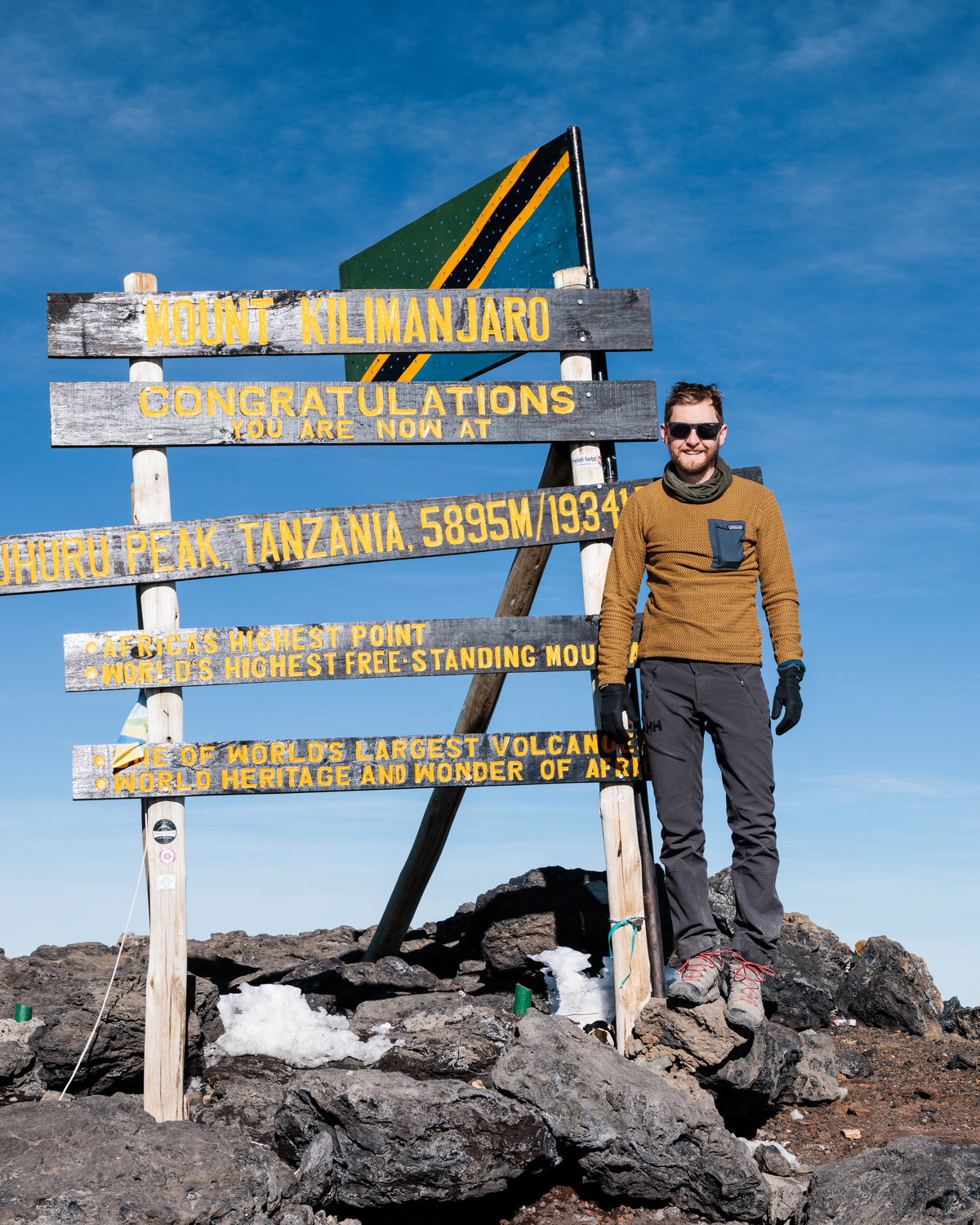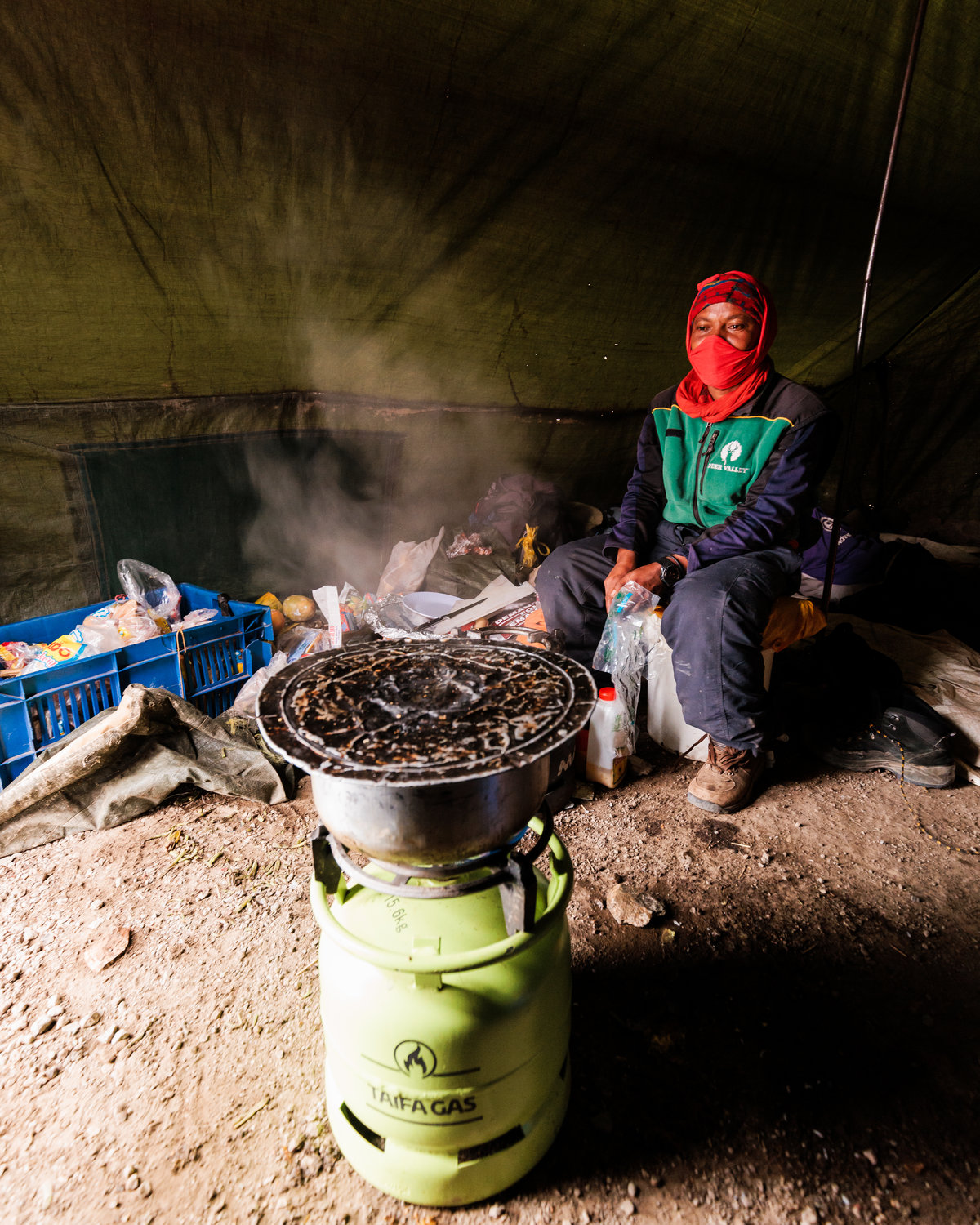Bristol man battles Covid delays and altitude to summit Kilimanjaro
Cody Burnett had planned to celebrate his 30th birthday with a climb up Kilimanjaro. Covid delayed that plan, but last month, Burnett reached his goal.
This item is available in full to subscribers.
Please log in to continue |
Register to post eventsIf you'd like to post an event to our calendar, you can create a free account by clicking here. Note that free accounts do not have access to our subscriber-only content. |
Day pass subscribers
Are you a day pass subscriber who needs to log in? Click here to continue.
Bristol man battles Covid delays and altitude to summit Kilimanjaro
Cody Burnett had planned to celebrate his 30th birthday with a climb up Kilimanjaro. At 19,341 feet, it is Africa’s highest peak and one of the Seven Summits, the tallest mountains on each continent. Covid delayed that plan, but last month, Burnett reached his goal.
“I turned 32 four days after the summit, then I came home and threw my back out shoveling snow,” he said.
The 2008 Mt. Hope graduate who studied anthropology and journalism at URI and, for a semester, in South Africa, works in finance for UBS now. But writing and photography remain among his passions. He journaled and photographed his way through his monthlong stay in Tanzania, even carrying extra lenses and batteries in his jacket next to heat packs on summit day, despite the need to minimize weight.
“I wasn’t going to leave my camera behind,” he said. “I have a good camera and I will credit it with some of the technical aspects of my photography but you go to places like Africa and climb mountains so that you can get the photos that are hard to get.”
The results were well worth it.
Travel has always been in Burnett’s blood — his mother Kelly has worked her entire career in the industry, and launched Travel By Kelly, a local, highly rated agency with a great social media presence, several years ago.
“Dad was in the Navy and mom has always worked in travel, so my sister Jessica and I were super fortunate that travel was always a critical part of our education,” he said.
Difficult, but accessible
Burnett admits he didn’t train as much as he intended to in the months leading up to the climb, beyond some treadmill time and a side trip with his friend (and Kilimanjaro traveling and hiking companion) James Lynn to hike Longs Peak, a 14,000 footer outside of Estes Park, Colo.
“I should have trained more,” he said. “I knew I’d be able to do it physically, but there’s only about a 45-65 percent success rate on Kilimanjaro, and it’s because of the altitude.”
By mountaineering standards, Kilimanjaro is considered accessible.
“It’s probably the hardest thing I’ve ever done,” said Burnett. “But you don’t need mountaineering skills, ice axes, rope skills...it takes more positivity than anything. You have to be okay with being cold, tired, and sore, but it’s accessible.”
In a typical year, as many as 50,000 people attempt it — and the (exceptionally fit) septuagenarian is not unheard of. The key, according to Burnett, is the route chosen by your outfitter. Paradoxically, a longer route allows for more slow and steady acclimatization, and so a higher rate of success.
“Pole, pole, that’s Swahili for slowly slowly, and they repeat that constantly,” said Burnett. “Everything is about going slow, letting your body acclimate. At 20,000 feet your body is simply not going to get the oxygen you need to recover from exertions.”
Getting to Tanzania was the first climb
Before Burnett and Lynn got to the base of Kilimanjaro, they had to navigate around the Omicron surge in early January, and the changing international travel regulations that went along with it.
“After a two-year delay, we really did not want to see the trip cancelled again,” Burnett said. They were supposed to leave on January 3, and Tanzania required a 96-hour Covid test, which they received at the fee-based clinic at the airport. Then, Tanzania changed the rules, meaning that they would have to take the expensive and difficult-to-schedule tests again. The pair decided to take their chances and go early, within the now-shortened testing window.
They arrived in Tanzania with visas that would not be valid for another day, but the small “consideration” they had to pay the East African customs officials was far less than the cost of new Covid tests. The change of plans got them an extra day in the town of Moshi, the gateway to Kilimanjaro located at about 3,500 feet elevation.
The Lemosho route
They met up with their outfitters, G Adventures, and the other eight clients, to tackle the Lemosho route, which is considered the longest and perhaps most challenging of the seven available routes, but again, probably the one with the highest success rate due to the added time to acclimate to the altitude. The entire trek took eight days — about 5.5 up and 2.5 down, and led from jungle to heather to alpine terrain. Due to the topography of the mountain, with three volcanic cones, there were a lot of elevation losses along with the gains.
“You are really working for it,” said Burnett.
He and his fellow trekkers all had their days when the altitude became a challenge, and headaches and nausea were always impacting someone in the group. Fortunately for Burnett, after a sketchy second day, he felt better the higher they got.
There was one day on the trek that was fun for nobody. The day before the final summit push, the group happened across another group of trekkers, one of whom had suffered a medical emergency; members of the man’s group were attempting to give him CPR and contact a helicopter.
“There was nothing we could do but to get out of the way,” Burnett said. “A couple of our guides stayed to tag in on CPR, but we could see them as we continued to climb. We could see that they were working but getting nowhere, and the clouds were moving in so they were not going to get a helicopter rescue. Emotionally and mentally it was the hardest day.”
“When you are 15,000 feet up a 20,000 foot mountain, there’s no bailing out.”
A very long summit day
The summit day was actually more like two, with a several-hours hike to base camp to start the first day.
“We got to base around 1:00 and had a summit briefing. They encouraged us to have a quick nap, then dinner, then another nap,” said Burnett. “But really, you are excited and it’s hard to rest. We started the final 4,300-foot climb around 11 p.m. It was cold, and dark, and you couldn’t see, but I felt so good, I knew I was going to summit, so I decided I was going to enjoy the hell out of this.”
“The guides were singing, and I was singing along with them, enjoying the experience…for a few words anyway, until I ran out of breath.”
It took about nine hours but at long last, the group — all 10 of them — reached the summit. Then it was 3-4 hours dirt-skiing scree back down to Base Camp for a quick nap, then another 4-6 hours down to the 13,000 foot jungle camp, where they could safely take a longer break at a more restorative altitude. Arriving there at 5 p.m., they had effectively been up 36 hours, and on their feet at altitude for much of it.
Credit where it’s due
Burnett gives most of the credit for his wonderful experience to the team of guides (one main, three assistant), 20 porters, and the chef who staffed the expedition.
“Their work ethic is otherworldly,” he said. “I just wanted to go for the challenge, but hanging out with these guys in camp was a big motivator too.”
And while he enjoyed the relatively pristine experience of climbing Kilimanjaro with a light crowd, he hopes that changes soon.
“For some of these guys it’s their first trek in two years,” he said. “I really hope it comes back for them.”
Burnett’s first priority (now that he has mostly recovered from his shoveling mishap) is gaining back the weight and muscle lost on the Kilimanjaro trek. Then he’s getting married this July at Mount Hope Farm (though hoping to squeeze in a 14,000 footer adjacent to his bachelor party, planned for Colorado). After that? Probably staying a little closer to home for a while.
“I’d like to do the New Hampshire 48,” he said, referring to the 48 peaks over 4,000 feet in the White Mountains. He’s also got his eye on Aconcagua, the highest summit in South America at 22,000 feet.
“I’d like to continue with seven summits, though I probably won’t ever do Everest,” he said. “It’s so commercialized and prohibitively expensive.”
For the animals
Burnett’s climb did have a secondary goal: raising money for the Wildlife Clinic of RI, where he serves currently as Treasurer of their board of directors.
“It’s an awesome organization of dedicated people, with a clinic in Narragansett but rehabbers all over the state. They rehabbed 6500 animals last year,” he said. “Their annual budget and the impact they have don’t correlate, they have such an incredible dedicated team of rehabbers.”
To contribute to Burnett’s fundraising campaign via Facebook, search for Cody’s fundraiser: Climb for the Wildlife Clinic of Rhode Island, or visit the organization directly at riwildliferehab.org.











